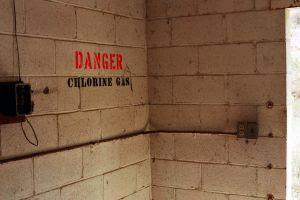What constitutes CPP?
Reckoning the cost per page (CPP) of laser print jobs is not an easy task as there are a number of variables involved in the computation. It would have been easier if CPP is measured only based on consumable costs (e.g., toner cartridge, toner refill kit) against the number of pages printed. But then this is not the case since the cost of paper is also factored in along with the energy consumed to process the print job. Perhaps, what is most daunting is determining the depreciation cost of the printer unit as printer components like the OPC Drum and fuser do not expire at the same time. Each time you print, these components also share some degree of wear and its life cycle is dependent upon the number of pages printed. If the rated capacity of the OPC drum is 6,000 pages (an assumption) then CPP for the OPC drum is cost of component divided by the number of pages printed. Therefore, one will have to rely on calculated assumptions to get a fair cost analysis of these consumables.
Reckoning the cost per page (CPP) of laser print jobs is not an easy task as there are a number of variables involved in the computation. It would have been easier if CPP is measured only based on consumable costs (e.g., toner cartridge, toner refill kit) against the number of pages printed. But then this is not the case since the cost of paper is also factored in along with the energy consumed to process the print job. Perhaps, what is most daunting is determining the depreciation cost of the printer unit as printer components like the OPC Drum and fuser do not expire at the same time. Each time you print, these components also share some degree of wear and its life cycle is dependent upon the number of pages printed. If the rated capacity of the OPC drum is 6,000 pages (an assumption) then CPP for the OPC drum is cost of component divided by the number of pages printed. Therefore, one will have to rely on calculated assumptions to get a fair cost analysis of these consumables.
Is the standard Page Coverage of 5% realistic?
Take the case of the HP CB540A black toner cartridge that loads the HP LaserJet CP1215 color laser printer. With the consumable's rated capacity of 2,200 pages at 5% coverage, the standard page coverage of 5% is too conservative against the actual coverage. Most likely, coverage borders between 30% to 35% which brings actual yield in printed pages to only around 1,400. So, if the print job is over 2000 copies, then in-house printing will be more expensive considering the need for another replacement cartridge to produce the remaining copies. In this case, it becomes more economical to outsource the print job. On the other hand, if the print job only involves 20 to 30 pages, then in-house printing using the CP1215 laser printer is really the most sensible option.
HP Laser Printer CPP versus offset printer charge per copy?
To help laser printer users appreciate the value of CPP, printing giant Hewlett Packard prepared a printing cost footprint - a cost computation that covers all the variables relevant to the print out of a single color document.by the CP1215 color laser printer. HP’s computation of cost per page (CPP) include toner requirements, cost of paper, energy required to sustain printer operation as well as the depreciation of printer components. HP’s cost computation for a color print job that covers 50 copies at 30% page coverage comes at $0.295 per page; with the print job's aggregate cost estimated at around $14.72. The acquisition cost of the color printer is valued at around $300 - so it will take 17 print jobs of the same volume to offset the cost of the printer. The CPP is definitely much cheaper in this case compared to the local printer's $0.66 charge per copy for the same print requirement.
For users intending to reduce on printing expenses, CPP is even lower with a compatible toner refill kit - cheaper by 50% than OEM toner cartridges. Toner refill kits are produced by third party manufacturers and are intended to refill empty OEM toner cartridges. The CB540A cartridge is retailed at $75 while an equivalent toner refill kit sells for only $39.95. Nonetheless, the consumable delivers similar print quality and yield as the OEM toner cartridge. Read more about toner refill kits from this post.







































